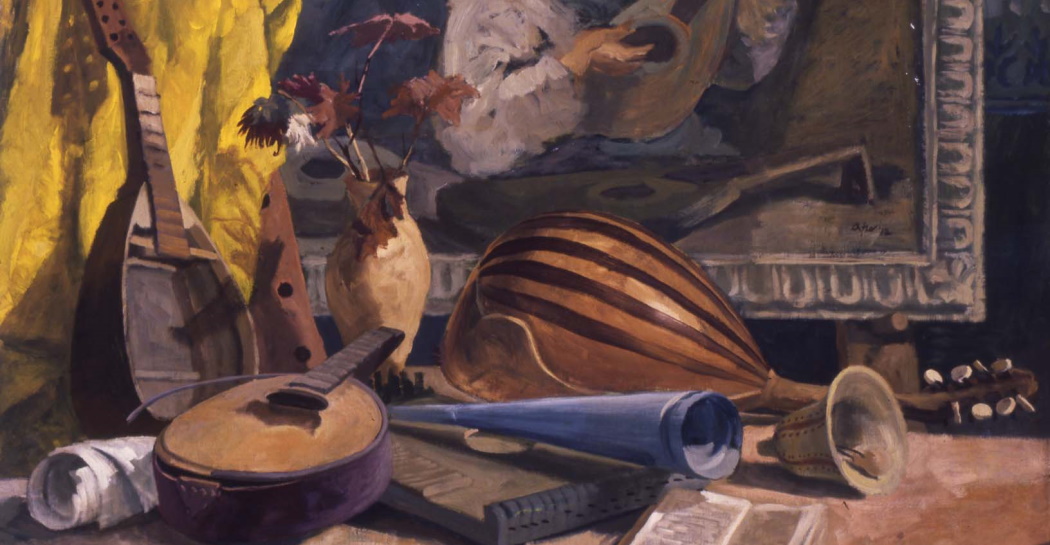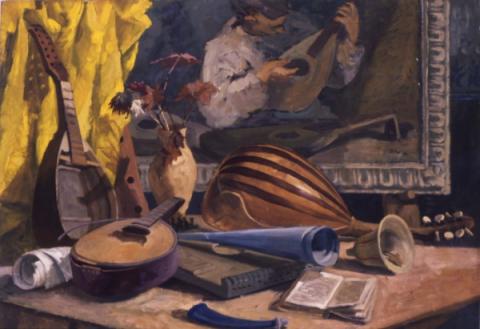Artwork of the month - January 2022
January 2022
Afro (Afro Libio Basaldella)
(Udine, 1912 - Zurigo, 1976)
Natura morta, 1937
Oil on multilayered, cm 70 x 95,5
inv. AM 1337

Exhibited at the VIII Lazio Fine Arts Union Exhibition in 1938, the painting shows a composition of various musical instruments (mandolin, lute, trumpet, horn, psaltery, bell) and, in the background, a "picture within a picture" in which a young man is playing a stringed instrument similar to those that are damaged and unusable in the foreground.
The choice of viewpoint, the oblique positioning of the table and, above all, the numerous formal, chromatic and luministic correspondences help to strengthen the link between the objects in the foreground and the painting in the background - the former accurately described and focused, the latter more frayed and indefinite - inextricably linked in a single narrative and symbolic structure.
Critics tend towards a metaphorical interpretation of the subject: in the painting in the background, the music comes from the fingers of the young lutenist, who has a working instrument; the damaged and disused instruments on the table, on the other hand, do not make music. In line with the theme of seventeenth-century "vanitas", this is a reflection on the passage of time, memory, and the fragility and corruptibility of things.
One of the most interesting aspects of the painting is the presence of two dates: "1937", on the edge of the table in the lower right-hand corner, next to the artist's signature, indicates the year the work was created; "1912", in the lower corner of the painting with the musician, indicates the artist's year of birth. In this way Afro suggests a further key to interpretation: every artist - and specifically he alludes to himself as a painter - has the power to transmute an object into art, to generate poetry from inanimate matter, to transfigure reality.
Afro Basaldella, who overcame naturalistic figuration in his long career to move on to an intense expressionism and then, after the war, to a lyrical and evocative abstraction, was one of the exponents of the Roman School and of "tonalism" in the 1930s. In this painting, structured according to careful chromatic arrangements of a few colours on a predominance of yellows, there are also clear references to Venetian colourism, to the Flemish 17th century, to the still lifes with a musical theme by Evaristo Baschenis from Bergamo (1617-1677) and, in the contemporary scene, to some works by Corrado Cagli and the forms of Giorgio Morandi.
Return to the section > The Galleria d'Arte Moderna artwork of the month







































